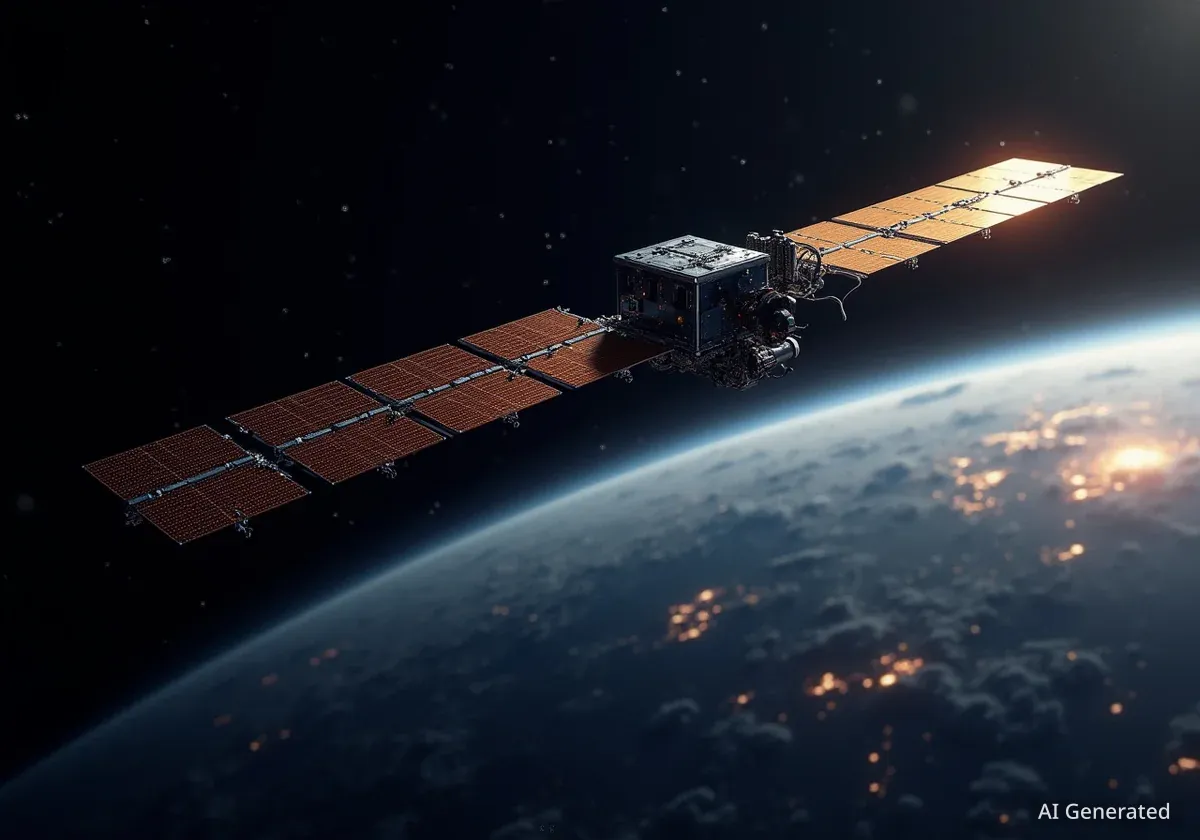Two astronauts from China's Shenzhou 20 mission have successfully completed a six-hour spacewalk to install additional debris protection on the Tiangong space station. The operation, which took place on Friday, September 26, is part of a series of upgrades to enhance the orbital outpost's resilience against potential impacts from space debris.
The extravehicular activity (EVA) was conducted by taikonauts Chen Zhongrui and Wang Jie, while crewmate Chen Dong monitored the procedure from inside the station. According to China's state broadcaster CCTV, the crew accomplished all their planned tasks, which also included inspections of external equipment.
Key Takeaways
- Shenzhou 20 astronauts Chen Zhongrui and Wang Jie conducted a six-hour spacewalk on September 26, 2025.
- The primary objective was to install additional debris shielding on the Tiangong space station.
- This marks the fourth spacewalk for the Shenzhou 20 crew, which arrived at the station in April.
- The mission has prioritized reinforcing the station's defenses, with similar work performed on previous spacewalks.
A Focused Effort on Station Protection
The spacewalk on Friday marks the latest in a concentrated effort by the Shenzhou 20 crew to bolster the Tiangong space station's defenses. This was the fourth EVA for the mission since its arrival on April 24, with a significant focus on external upgrades.
Previous spacewalks on May 22 and August 15 also involved similar tasks related to debris shield installation. The repeated nature of this work underscores the growing importance of protecting orbital assets from the increasing threat of space junk.
The Growing Threat of Space Debris
Orbital debris, often called space junk, consists of defunct satellites, spent rocket stages, and fragments from collisions. These objects travel at extremely high velocities, posing a significant risk to active satellites and crewed spacecraft. Even a small piece of debris can cause catastrophic damage upon impact.
Details of the Spacewalk
During the six-hour operation, Chen Zhongrui and Wang Jie worked outside the T-shaped, three-module station. Their tasks were clearly defined and executed as planned. In addition to fitting the new protective panels, the astronauts performed routine inspections and maintenance on various external systems.
Chen Dong, the mission commander, remained inside Tiangong, providing support and coordinating with ground control. This division of labor is standard procedure for EVAs, ensuring the safety and efficiency of the astronauts working outside the spacecraft.
"The two spacewalkers accomplished all of their prescribed tasks, which included the installation of debris protection devices and the inspection and maintenance of external equipment," reported CCTV in its official broadcast.
The Shenzhou 20 Mission and Tiangong's Future
The Shenzhou 20 mission is the ninth crewed flight to the Tiangong space station. The three-person crew is currently in the final phase of their approximately six-month stay in orbit. Crewed missions to Tiangong are a cornerstone of China's ambitious space program, providing a platform for scientific research and technological development in a microgravity environment.
Tiangong Space Station Quick Facts
- Modules: Currently composed of three primary modules.
- Mass: Approximately 20% as massive as the International Space Station (ISS).
- Crew Missions: Shenzhou 20 is the ninth crewed mission to the outpost.
- Future Plans: Chinese space officials have indicated they are considering expanding the station with additional modules.
A Proactive Approach to Orbital Safety
The decision to dedicate multiple spacewalks to installing debris shielding reflects a proactive strategy by the China Manned Space Agency (CMSA). As low Earth orbit becomes more congested, the probability of collisions increases. By reinforcing Tiangong, China is taking tangible steps to safeguard its long-term investment in space and ensure the safety of its astronauts.
This focus on protection is not unique to China. The International Space Station has also undergone upgrades to its shielding over the years and occasionally performs maneuvers to avoid tracked debris. The work aboard Tiangong is part of a global recognition that orbital debris is a serious challenge for all spacefaring nations.
As the Shenzhou 20 crew prepares for their return to Earth, their work leaves the Tiangong station better equipped to handle the hazards of its orbital environment, paving the way for future missions and potential expansion of the outpost.





